Five tips for bike commuting to work
To help you better navigate your ride to work, we share our top tips on getting to A to B during rush hour safely
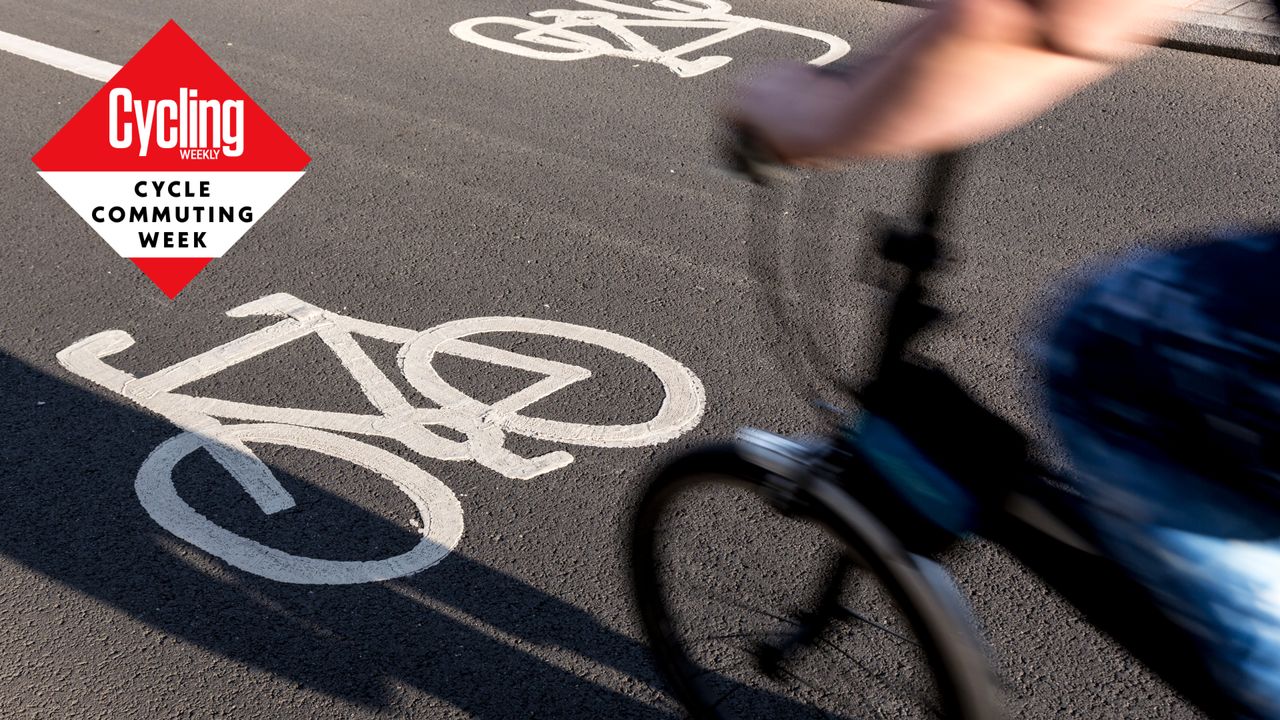
Commuting by bike is much safer than many people think. According to government statistics, one cyclist is killed on Britain’s roads for every 27 million miles travelled by bike - the equivalent to over 1,000 times around the world. In 2020, this meant there were around 9.4 million cycle trips for every fatality in the UK.
The same stats suggest you are more likely to be injured in an hour of gardening than in an hour of cycling. It's also worth highlighting that while cycle traffic has grown by 96% between 2004 and 2020, fatalities have increased by just 4%.
All of which means that while there are many benefits of commuting by bike to work,, it does come with some risk. The UK is still some way behind the likes of the Netherlands when it comes to cycling infrastructure, which usually means that you'll be sharing the road with cars at some point during your journey.
To help you better navigate your ride to work, and to lower your risk of an accident, we share our top five tips for safe commuting.
1. Be visible
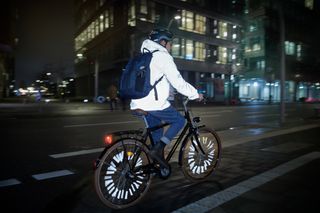
Most cyclists think they are far more visible than they actually are. Around fifteen per cent of accidents occur in the dark and low light conditions. A huge range of bike lights are available, but reflective clothing dramatically increases your visibility and it's worth adding a few pieces to your commuting kit. The best commuter bike helmets often include lighting, which can place a light higher up to increase your visibility.
Be aware that because of the way human eyes work, you are less visible at dawn and dusk, so take extra care. You don’t have to dress up as a lollipop person either, with lots of tastefully high-visibility kit available.
A hi-vis vest or gilet is a great addition for spring and autumn riding, while the best commuter cycling jackets or a waterproof cycling jacket with reflective detailing is a wise choice during the winter.
It's also advisable to add some colour to your feet and hands. Your feet are in almost constant motion when you're riding, therefore a pair of fluro socks or overshoes are likely to catch the eye of a motorist. The same is true for your hands, with a bright pair of gloves adding visibility to your road signalling.
If you use a cycling backpack during your commute think about investing in a fluro cover, remembering that otherwise the pack may negate some of the benefits of a visible jacket or vest.
2. Don’t be afraid to use the road
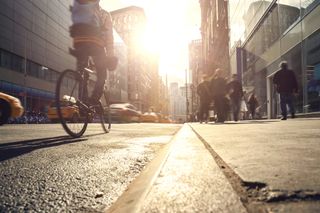
You have as much right to be using the road as the motorists do. But this comes with a responsibility. Ensure you give enough space to parked cars and be aware of car doors that could open into your 'lane'. It's worth remembering that passenger doors cause more accidents than driver doors as passengers are less likely to check mirrors.
A doors width clearance is sensible and don’t hug the curb either. Drains, potholes, and road debris mean that riding in the gutter can be hazardous and there is a lot more chance of getting a puncture. In fact, sixteen per cent of accidents are caused by a pot hole/defective road surface. Riding clear of the curb also increases your visibility to car drivers.
3. Be cautious about filtering
As cyclists we are allowed to filter through traffic like motorcycles. However, don’t undertake large vehicles such as HGVs and buses and be aware of vehicles turning left. If in doubt, stay in the line of traffic.
Most accidents occur at junctions. Be conscious that drivers have a blind spot and take extra care when approaching junctions.
According to Cycle SOS, 40 per cent of the claims they handle involve vehicles emerging from side roads and 11 per cent of accidents occur on roundabouts.
4. Respect other road users
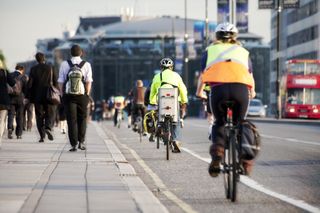
It's important to respect other road users and to avoid confrontation. Should you be on the receiving end of an aggressive road user, remain calm and polite. Your tone of voice can diffuse the situation, however, it is unlikely that you will be able to change an irate driver’s mind, so you're best to just back away.
Respecting road users should also extend to pedestrians that you encounter on your commute. Always stop at zebra crossings or crosswalks and never ride on the pavement or sidewalk. If you need to do so, get off your bike and walk it until you hit the road again.
5. Maintain your bike
It's important to regularly maintain and check your bike to see if its roadworthy. Having working brakes and gears will not just make your commute more enjoyable it will also make you safer. After all, two per cent of claims arise from a product or mechanical fault. Remember, should you be unfortunate enough to have an accident, but are riding a bike without working brakes you could be considered culpable.
So what should be on your checklist? It's a good idea to ensure that your brake cables aren't frayed, especially at the clamping points on the brake calipers. If you use hydraulic disc brakes, check that the levers and pads are actuating properly; a stiff or 'squishy' feel at the lever probably means they are due for a bleed. For both cable and hydro brakes check that the brake pads still have plenty of life left.
Gear cables should also be checked for fraying, while its worth measuring your chain for wear too. If your gears are slipping during your commute this is likely a sign of a worn chain, cassette or chainrings.
Avoiding punctures isn't always possible, but checking your tyres for wear can help reduce the likelihood of having to change a tube on the roadside - and while you're there check they are properly inflated and that the QR or thru-axle is securely tightened. If you're commuting regularly its worth investing in tyres with some in-built puncture protection.
If you've yet to start cycling to work, check out our guide to the best commuter bikes for practical cycling on a daily basis and find our top tips on cycling to work here.

Thank you for reading 20 articles this month* Join now for unlimited access
Enjoy your first month for just £1 / $1 / €1
*Read 5 free articles per month without a subscription

Join now for unlimited access
Try first month for just £1 / $1 / €1
Get The Leadout Newsletter
The latest race content, interviews, features, reviews and expert buying guides, direct to your inbox!
Luke Friend has worked as a writer, editor and copywriter for twenty five years. Across books, magazines and websites, he's covered a broad range of topics for a range of clients including Major League Baseball, the National Trust and the NHS. He has an MA in Professional Writing from Falmouth University and is a qualified bicycle mechanic. He has been a cycling enthusiast from an early age, partly due to watching the Tour de France on TV. He's a keen follower of bike racing to this day as well as a regular road and gravel rider.
-
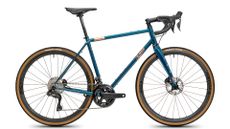 I believe this will fly: Pashley shifts up a gear with Roadfinder all-road and gravel bike launch
I believe this will fly: Pashley shifts up a gear with Roadfinder all-road and gravel bike launchIconic Brit brand Pashley steers in a new direction with a surprise collection of drop bar road and gravel bikes
By Simon Fellows Published
-
 Sidi Nix review: a performance winter boot that, with the brand's new fit, makes a lasting impression
Sidi Nix review: a performance winter boot that, with the brand's new fit, makes a lasting impressionWith Primaloft and Gore-Tex fabrics, the Sidi Nix boot is warm and winter-proof, but brand names cost money
By Tim Russon Published
-
 It’s ‘Cycle Commuting’ week on Cycling Weekly - here's how to get ready for Bike to Work Week
It’s ‘Cycle Commuting’ week on Cycling Weekly - here's how to get ready for Bike to Work WeekFrom 11-16th April here at Cycling Weekly we’ll be doing our bit to provide you with the tips and advice that make commuting to work by bike a breeze!
By Anna Marie Abram Published
-
 Strava launches new ‘docking station’ map layer to help urban cyclists better plan their routes
Strava launches new ‘docking station’ map layer to help urban cyclists better plan their routesNew map layer shows over 71,000 docking stations worldwide from more than 601 bikeshare and scooter schemes
By Anna Marie Hughes Published
-
 Ask a coach: ‘How fit can I get on a 10-mile commute to work?’
Ask a coach: ‘How fit can I get on a 10-mile commute to work?’Here’s how to best go about mixing up your commute for maximum fitness gains
By James Spragg Published
-
 Cycling workout of the week #10: Big gear minutes - ideal for mixing up your cycle commute [1hr]
Cycling workout of the week #10: Big gear minutes - ideal for mixing up your cycle commute [1hr]Do if…you want include some easily completable efforts into your commute – or regular rides – and improve your pedalling force
By Andy Turner Published
-
 What are the benefits of commuting by bike? Here are nine reasons why cycling to work is surprisingly brilliant
What are the benefits of commuting by bike? Here are nine reasons why cycling to work is surprisingly brilliantThe benefits to your fitness, the environment and your wallet are the big ones – but we’ve got a few more that might surprise you
By Anna Marie Abram Published